Space
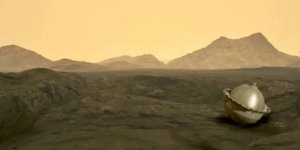
NASA’s DAVINCI — Deep Atmosphere Venus Investigation of Noble gases, Chemistry, and Imaging — mission embodies the spirit of innovation and exploration that its namesake, Leonardo da Vinci, was famous for. »

An international team of researchers has detected a binary star orbiting close to Sagittarius A*, the supermassive black hole at the centre of our galaxy. »

A new study points to why, and how, Io became the most volcanic body in the solar system. »

These celestial objects look like asteroids but act like comets now come in two flavors. »

Astronomers have used the unique capabilities of NASA's Hubble Space Telescope to peer closer than ever into the throat of an energetic monster black hole powering a quasar. »

A team of astronomers has found that Venus has never been habitable, despite decades of speculation that our closest planetary neighbour was once much more like Earth than it is today. »

Scientists find that cometary dust affects interpretation of spacecraft measurements, reopening the case for comets like 67P as potential sources of water for early Earth. »

The rover captured a 360-degree panorama before leaving Gediz Vallis channel, a feature it’s been exploring for the past year. »

“For the first time, we have succeeded in taking a zoomed-in image of a dying star in a galaxy outside our own Milky Way,” says Keiichi Ohnaka, an astrophysicist from Universidad Andrés Bello in Chile. »
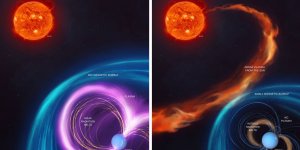
NASA’s Voyager 2 flyby of Uranus decades ago shaped scientists’ understanding of the planet but also introduced unexplained oddities. A recent data dive has offered answers. »

New research suggests a moon orbiting the sophomoric-sounding planet Uranus might contain enough natural resources to support alien life. »
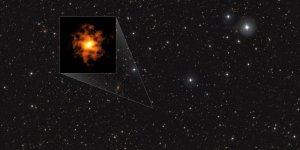
Researchers have discovered the most distant Milky-Way-like galaxy yet observed. Dubbed REBELS-25, this disc galaxy seems as orderly as present-day galaxies, but we see it as it was when the Universe was only 700 million years old. »

Measurements from the agency’s Curiosity rover are providing clues as to how the Red Planet’s ancient climate transformed. »

Deposits of ice in lunar dust and rock (regolith) are more extensive than previously thought, according to a new analysis of data from NASA’s LRO (Lunar Reconnaissance Orbiter) mission. »
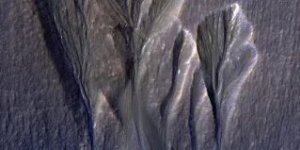
While actual evidence for life on Mars has never been found, a new NASA study proposes microbes could find a potential home beneath frozen water on the planet’s surface. »
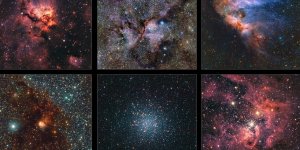
Astronomers have published a gigantic infrared map of the Milky Way containing more than 1.5 billion objects ― the most detailed one ever made. »

Using the European Southern Observatory’s Very Large Telescope (ESO’s VLT), astronomers have discovered an exoplanet orbiting Barnard’s star, the closest single star to our Sun. »

They used data from NASA’s WISE telescope, which later became the NEOWISE mission, to discover the faint, fast-moving object zooming out of the Milky Way. »

NASA announced at a press conference that Sunita Williams and Barry Wilmore would return home from the International Space Station on a SpaceX Crew Dragon spacecraft in February 2025. »

Results from newly released 3-year study may help illuminate origins of magnetic neutron stars »

After 3½ years exploring Jezero Crater’s floor and river delta, the rover will ascend to an area where it will search for more discoveries that could rewrite Mars’ history. »

Astronomers have discovered that red dwarf stars can produce stellar flares that carry far-ultraviolet (far-UV) radiation levels much higher than previously believed. »

This NASA Hubble Space Telescope image captures the dwarf irregular galaxy UGC 4879 or VV124. »

In October 2022, astronomers were stunned by what was quickly dubbed the BOAT — the brightest-of-all-time gamma-ray burst (GRB). Now an international science team reports that data from NASA’s Fermi Gamma-ray Space Telescope reveals a feature never seen before. »

The six-wheeled geologist found a fascinating rock that has some indications it may have hosted microbial life billions of years ago, but further research is needed. »

An international team of astronomers using NASA’s James Webb Space Telescope has directly imaged an exoplanet roughly 12 light-years from Earth. The planet, Epsilon Indi Ab, is one of the coldest exoplanets observed to date. »

Researchers used more than 120 years of data to decipher how melting ice, dwindling groundwater, and rising seas are nudging the planet’s spin axis and lengthening days. »

Among several recent findings, the rover has found rocks made of pure sulfur — a first on the Red Planet. »

An international team of scientists using data from NASA’s LRO (Lunar Reconnaissance Orbiter) has discovered evidence of caves beneath the Moon’s surface. »

NSF-DOE Vera C. Rubin Observatory will capture the faint light of distant brown dwarfs to help scientists understand the Milky Way's formation and evolution »

The 23-year-old orbiter is taking images that offer horizon-wide views of the Red Planet similar to what astronauts aboard the International Space Station see over Earth. »

Infrared imagery from the solar-powered spacecraft heats up the discussion on the inner workings of Jupiter’s hottest moon. »

Tucked away with each rock and soil sample collected by the agency’s Perseverance rover is a potential boon for atmospheric scientists. »

Astronomers have detected carbon in a galaxy just 350 million years after the Big Bang, the earliest detection of any element in the universe other than hydrogen. »

Using the Low-Frequency Array (LOFAR), astronomers have identified a new radio galaxy, J0011+3217, characterized by an unusual one-sided secondary lobe. »